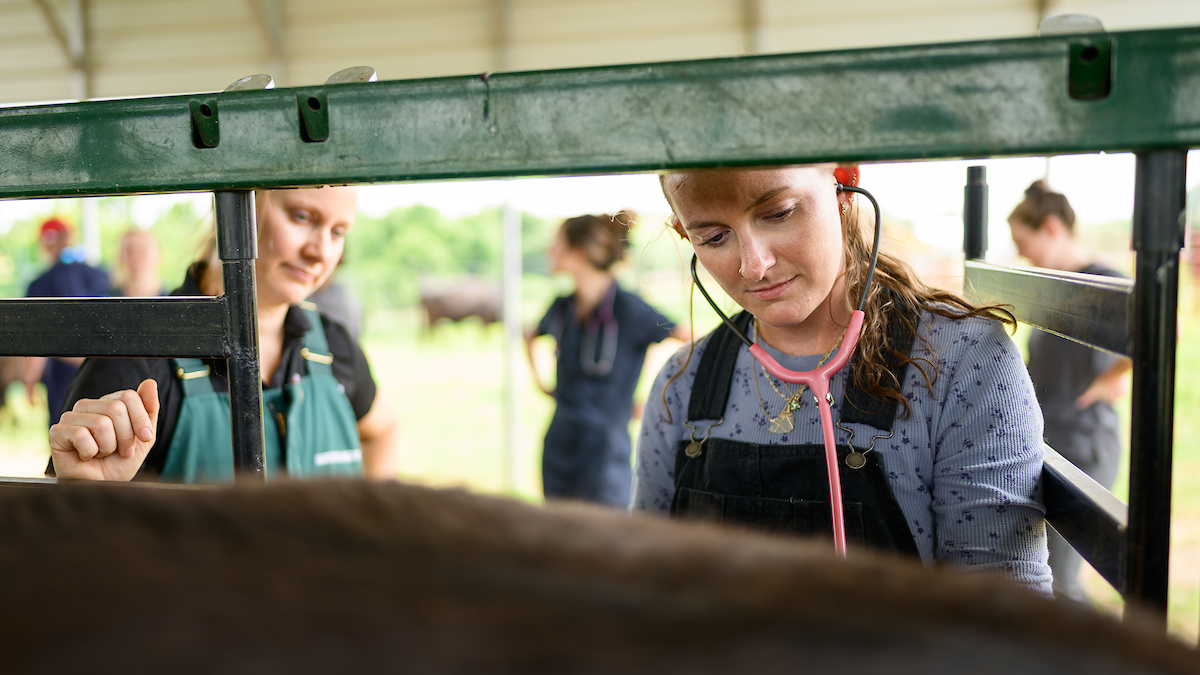CVM Researcher Studies Viruses to Protect Heart from Infections
The following originally appeared in Results, a publication of NC State University’s Research, Innovation and Economic Development Program.
Humans are born with almost every heart muscle cell they will ever have. Yet the body does not have a barrier to protect the heart similar to the one that blocks pathogens from getting to the brain.
Dr. Barbara Sherry, a professor of virology in the NC State University College of Veterinary Medicine, says a viral infection in the heart can kill the fittest athlete, but most people who contract such a virus successfully fend it off, and it goes undetected. “The heart is constantly being barraged by viruses in the bloodstream,” she says. “Why do we win the battle most of the time?”
Dr. Sherry, a member of the Department of Molecular Biomedical Sciences and the Center for Comparative Medicine and Translational Research, used a one-year, $375,000 Recovery Act-funded grant from the National Institute of Allergies and Infectious Diseases to hire two research associates to help with ongoing studies into mechanisms the heart uses to protect itself. They include an antiviral response that differs from the response of other cells in the body and a protein that might help cardiac cells repair themselves. That work has shown enough promise that the National Institutes of Health has awarded her a five-year, $1.8 million grant to continue the projects.
For most cells, the interferon system signals that the body is under attack from a pathogen. “The first few cells take one for the team and send up a flare so that the other cells can protect themselves against a virus,” Dr. Sherry says. Because cardiac cells cannot be sacrificed without damaging the heart, they use a continuous, low-level flow of interferon to “pre-arm” themselves to fight an infection instead of expressing interferon only in response to a pathogen. At the same time, however, viruses figure out ways to block the signal the cells are emitting. Dr. Sherry is studying how to deactivate a virus’ ability to extinguish the warning flare, and a possible key she has found is that viruses inhibit a protein that controls the activity of genes in cells.

- Dr. Barbara Sherry’s Recovery Act study has led to an additional $1.5 million project funded by the National Institutes of Allergies of Health.
Dr. Sherry also is working with RTI International in Research Triangle Park and the University of California-San Diego to study the proteins in cardiac cells to see if they provide a protection mechanism. She has identified one that helps repair cells after a heart attack and found that some milder viruses change the protein’s structure while more virulent forms can destroy it altogether. “Most cells usually produce the protein only under stress,” Dr. Sherry says. “This could be a therapy for the body, not just the heart, to fight off viruses.”
The Center for Comparative Medicine and Translational Research, located on NC State’s Centennial Biomedical Campus, is a community of more than 100 scientists from five NC State colleges. These investigators are involved in collaborative ”One Medicine” studies with government, private, and other academic researchers to advance knowledge and practical applications that improve the health of animals and humans.


